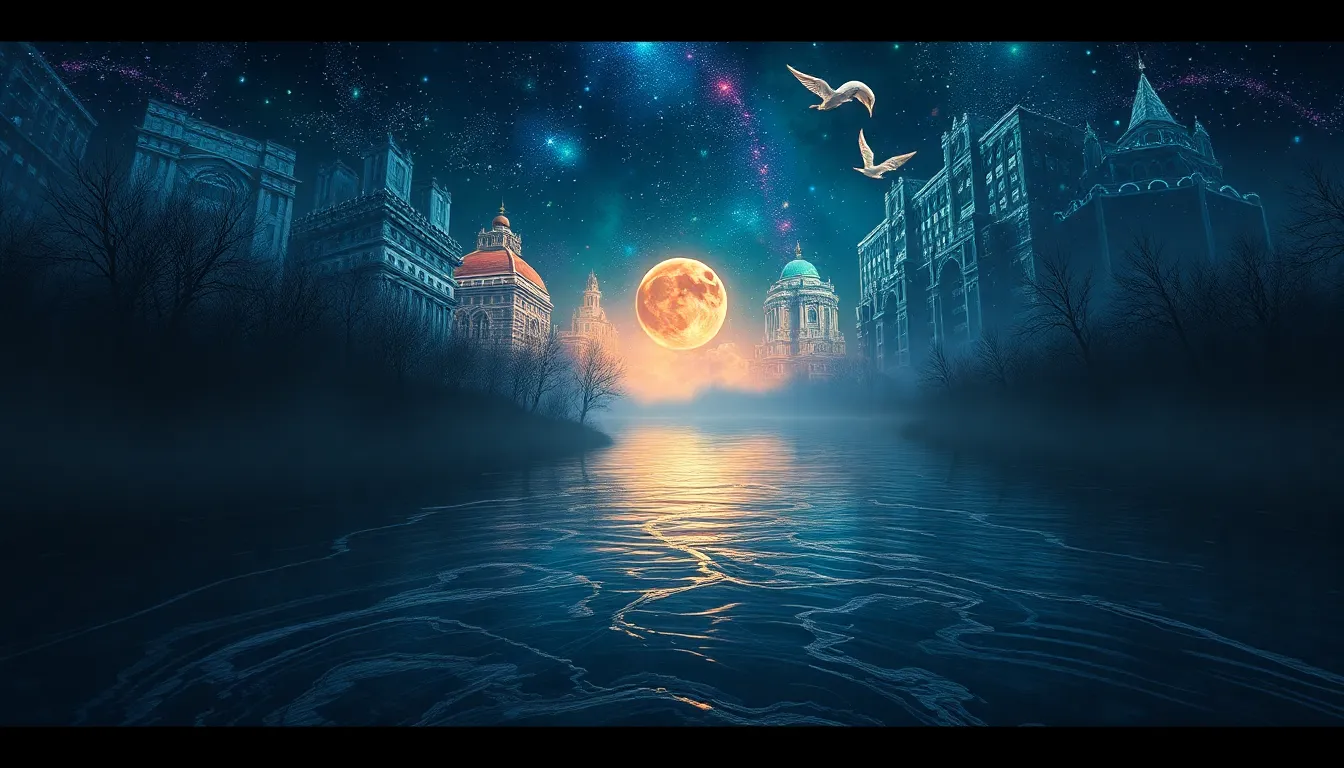The River of the Unseen: Myths Beyond Human Perception
I. Introduction
The term “The River of the Unseen” symbolizes a vast and mysterious expanse beyond human perception, representing the unknown and the mystical realms that countless myths have sought to explain. This river serves as a metaphor for the boundaries of human understanding and the rich tapestry of tales that arise from our attempts to comprehend what lies beyond our sensory experiences.
Throughout history, myths have played a crucial role in shaping human culture and perception, providing explanations for the unexplainable and offering comfort in the face of uncertainty. They serve as cultural touchstones, reflecting our deepest fears, aspirations, and curiosities about the unseen forces that govern our lives.
This article explores the rich world of myths surrounding the unseen, delving into historical contexts, cultural interpretations, and the psychological impacts of believing in what we cannot see.
II. Historical Context of Unseen Myths
From ancient civilizations to modern societies, the concept of the unseen has captivated human imagination. Various cultures have developed distinct interpretations of unseen realms, often personifying them through deities, spirits, and otherworldly entities.
A. Ancient civilizations and their interpretations of the unseen
In ancient Egypt, the concept of the afterlife and the unseen world was paramount, with the Nile River symbolizing the journey of the soul. Similarly, in Mesopotamia, myths surrounding the underworld provided explanations for death and the afterlife.
B. The role of mythology in shaping cultural beliefs
Mythology has been instrumental in shaping cultural beliefs across different civilizations. For instance, the Greek myths of Hades and Persephone illustrate the duality of life and death, encapsulating the unseen struggles of the human condition.
C. Evolution of the concept of unseen realms through history
As societies evolved, so did their interpretations of the unseen. The transition from polytheistic beliefs to monotheism in many cultures shifted the focus of unseen realms from numerous gods to a singular divine presence, altering the nature of myths surrounding the unseen.
III. The Nature of Perception: What Lies Beyond Human Senses
Understanding human perception is crucial to exploring the unseen. Our senses are limited, and there exists a vast array of phenomena that lie beyond our ability to perceive them directly.
A. Understanding human perception and its limitations
Human beings perceive only a fraction of the electromagnetic spectrum. For example, we cannot see ultraviolet or infrared light, yet they play significant roles in our environment. This limitation invites the question: what else is out there that we cannot perceive?
B. Scientific perspectives on unseen phenomena
Science has identified numerous unseen realms, from microscopic organisms to distant galaxies. The advent of technologies such as telescopes and microscopes has expanded our understanding of the universe, revealing layers of reality previously hidden from our senses.
C. Philosophical implications of the unseen in human experience
The unseen challenges our understanding of reality. Philosophers have long debated the nature of existence, with many arguing that the unseen is as vital to our understanding of the universe as the seen. This dialogue continues to shape our beliefs and perceptions.
IV. Global Myths and Legends of the Unseen
Myths about the unseen exist across cultures, each offering unique insights into human beliefs and fears.
A. Overview of prominent myths from different cultures
- Japanese Shinto: The kami, or spirits, inhabit the unseen realms, deeply influencing the natural world.
- Native American Mythology: The concept of the Spirit World is central, where ancestors watch over the living.
- Hinduism: The idea of moksha, or liberation from the cycle of birth and rebirth, represents a profound unseen journey.
B. Comparative analysis of themes in unseen myths
Common themes in these myths often include:
- Spirits or deities that influence human fate.
- Other dimensions or realms that house souls or entities.
- Journeys into the unseen as metaphors for personal transformation.
C. Case studies: Specific myths and their cultural significance
One notable example is the Greek myth of Orpheus, who descends into the underworld to retrieve his beloved Eurydice. This myth symbolizes the struggle against the unseen forces of death and loss, highlighting the emotional depth of human experience.
V. The Role of Nature in Representing the Unseen
Nature often serves as a powerful symbol in mythology, with rivers specifically representing the flow of life and the journey into the unseen.
A. Rivers as symbols in mythology and their connection to the unseen
Rivers are frequently depicted as boundaries between the known and the unknown. For instance, in Greek mythology, the River Styx is the boundary between the living and the dead, embodying the transition into the unseen.
B. Natural landscapes as gateways to other realms
Mountains, forests, and oceans are often portrayed as sacred spaces where the unseen can be accessed. These landscapes provide a backdrop for encounters with spirits, deities, and otherworldly phenomena.
C. The interplay between environmental phenomena and mythic storytelling
Natural phenomena, such as storms or eclipses, have been interpreted as manifestations of the unseen, fueling myths that explain their significance and the emotions they evoke.
VI. Spirituality and the Unseen: A Deeper Connection
The relationship between spirituality and the unseen is profound. Many spiritual practices aim to connect individuals with realms beyond ordinary perception.
A. The relationship between spirituality and myths of the unseen
Spiritual beliefs often draw upon myths that describe the unseen, providing frameworks for understanding the mysteries of life, death, and existence beyond the physical realm.
B. Practices and rituals that connect humans to the unseen
Rituals such as meditation, prayer, and shamanic journeys are designed to bridge the gap between the seen and unseen, allowing practitioners to experience deeper dimensions of existence.
C. Personal testimonies and experiences of the unseen in spirituality
Individuals often share experiences of encountering the unseen through dreams, visions, or mystical experiences, reinforcing the belief in a reality beyond physical limitations.
VII. Modern Interpretations and Adaptations of Unseen Myths
In contemporary culture, ancient myths surrounding the unseen are being reinterpreted and adapted to resonate with modern audiences.
A. How contemporary culture reinterprets ancient myths
Modern literature and art frequently draw on ancient mythological themes, reimagining them in new contexts while preserving their core messages about the unseen.
B. The influence of technology on the perception of the unseen
Technological advancements, such as virtual reality, allow users to explore unseen realms in immersive ways, blurring the lines between myth and experience.
C. Media representations of the unseen in literature and film
Films and books often explore unseen dimensions, such as in the works of authors like H.P. Lovecraft, where the unseen evokes fear and fascination.
VIII. The Psychological Impact of Believing in the Unseen
Beliefs in the unseen can have significant psychological effects, influencing how individuals cope with uncertainty and the unknown.
A. The cognitive and emotional effects of mythological beliefs
Mythological beliefs can provide comfort, helping individuals to make sense of their experiences and emotions in the face of the unseen.
B. The role of belief in coping with the unknown
Believing in the unseen can offer a sense of control and understanding, enabling individuals to navigate life’s uncertainties with greater resilience.



